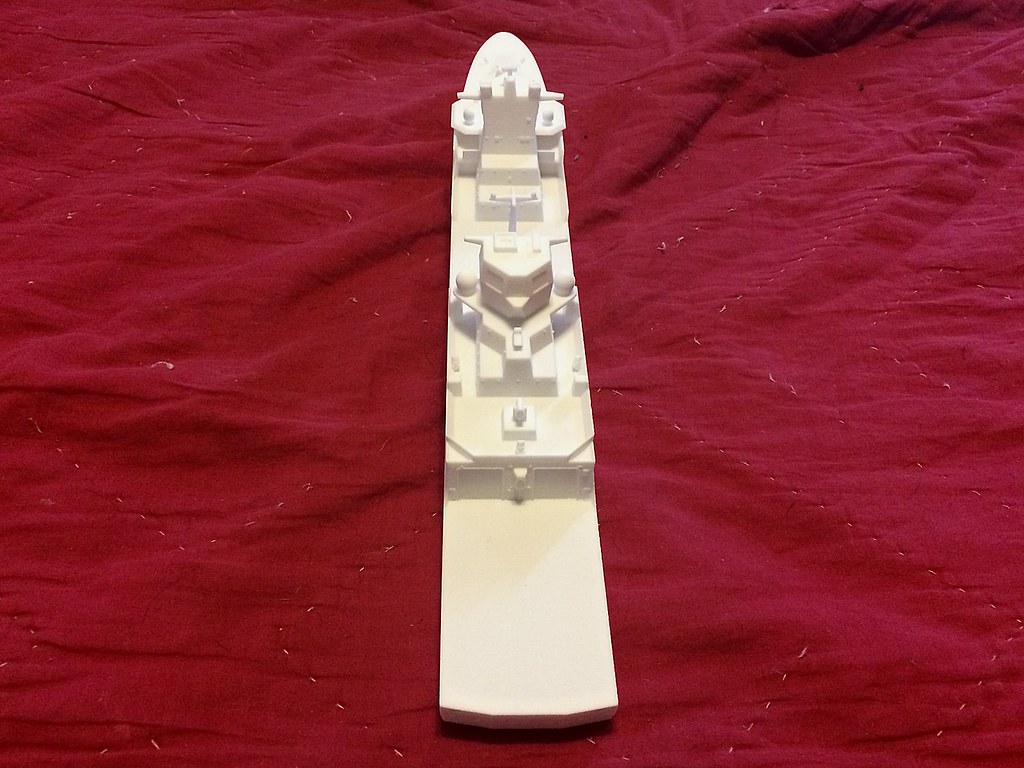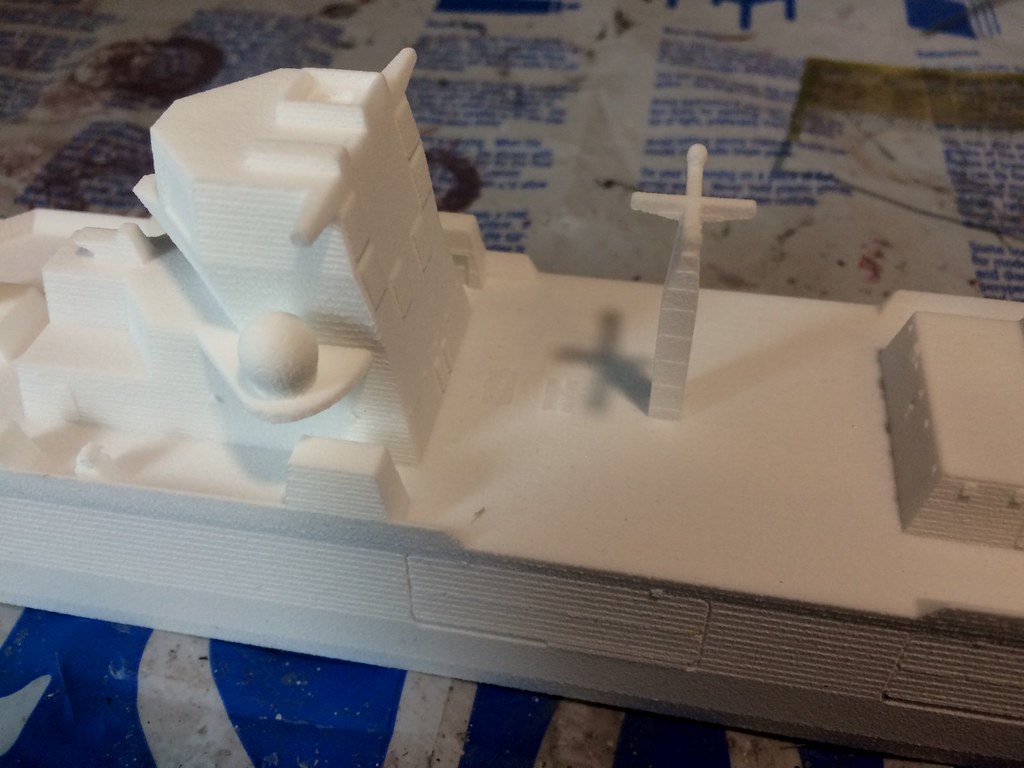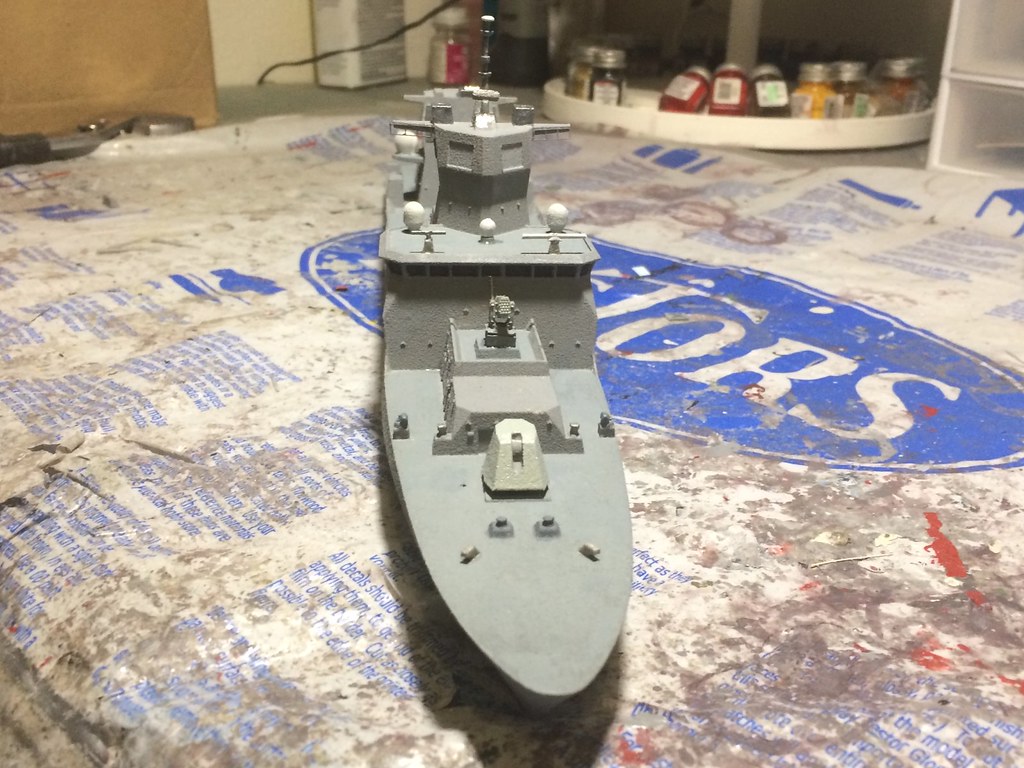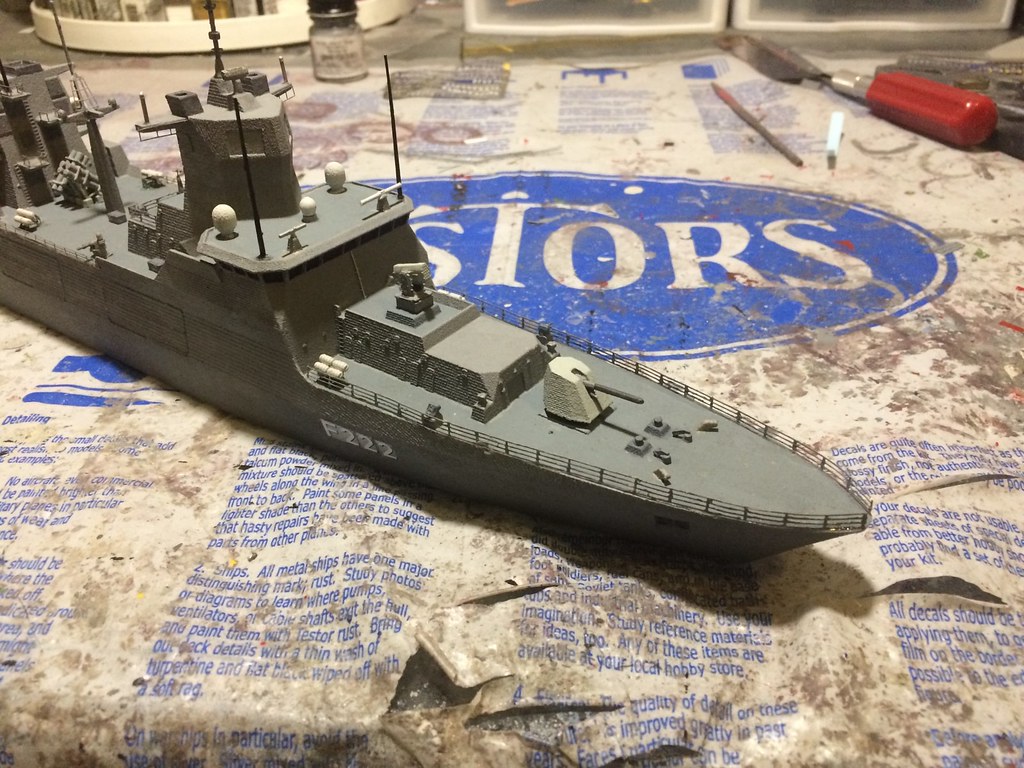@FORBIN @Jura @bd popeye @Blackstone @Obi Wan Russell @navyreco @tphuang @Air Force Brat @SouthernSky @Bernard @Scratch
My Review and Build of Dutch 3d Naval Minatures,
1/350 SCALE Type 125 Frigate, Baden-Württemberg, F222 REVIEW & BUILD,
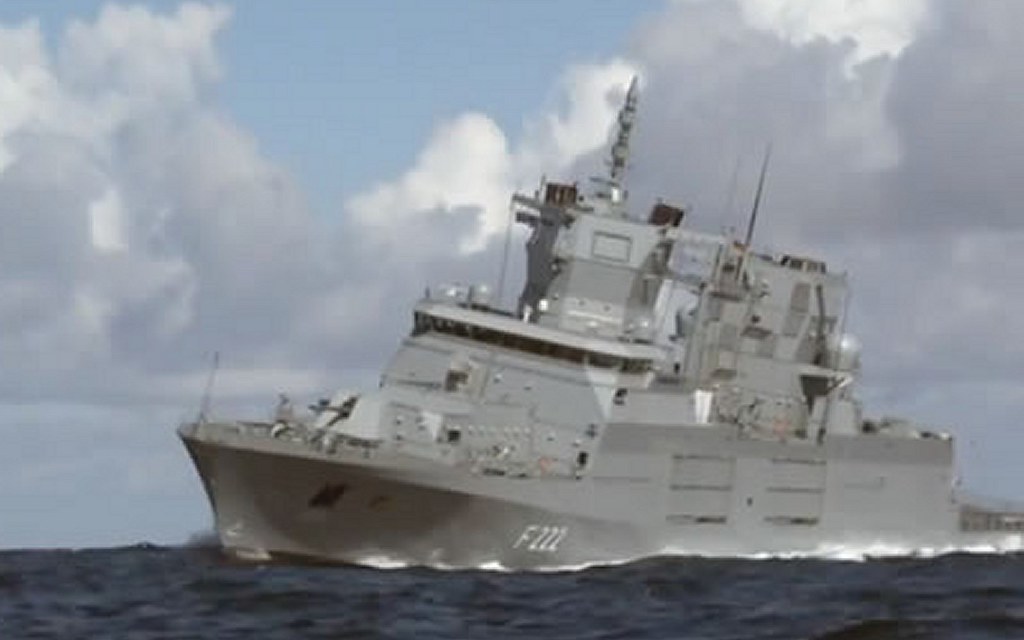


German Type F125 Baden-Württemberg Class Friagtes
The Type 125 Baden-Württemberg class of frigates, currently in development for the German Navy is a joint-venture of Thyssen-Krupp and Lürssen deevelopment. Although the F125-class are officially classified as frigates, in size they are comparable to destroyers. These vessels have a full load displacesment of more than 7,200 tons, making them the largest frigates in the world. They are being built to replace the Type 122 Bremen class frigates of which eight were built.
Three of the Type 125 vessels have already been launched, and so Germany has already retired four of its eight Bremen Class vessels.
As of yet, only one of the new vessels is about to be commissioned, th F222 the Type 125 Baden-Württemberg. Two more have been launched and they are the F223 Nordrhein-Westfalen which was launched 16 April 2015, and F224 Sachsen-Anhalt which was launched 4 March 2016.
Compared to the Bremen class, which were built with Cold War-era conditions and potential conflicts in mind, the Type 125 are being built to be multi-role, but principally directed at surface warfare, with surface and land attack capabilities its strong suite.
Anti-submarine defense will be handled by two helicopters it can carry, and anti-air defense is mainly for short range, close-in defenses using two RAM launchers with 21 missiles each.
F125 will have much enhanced land-attack capabilities. This will better suit the frigates in possible future peacekeeping and peacemaking missions. For such reasons, the F125 will also mount non-lethal weapons.
Major design goals also incluyded reduced radar, infrared and acoustic signatures (stealth technology). The slanted superstructure and use of stealth material and characteristics are evident on the vessels.
Other important requirements include long maintenance periods, such as the capability to deploy F125 class frigates for up to two years away from home with an average sea operation time of more than 5,000 hours per year (that's nearly 60%) which includes operation under tropical conditions.
As a result of this ter requirement, a combined diesel-electric and gas propulsion has been chosen for the machinery. This allows the substitution of large and powerful diesel engines for propulsion and sets of smaller diesel generators for electric power generation with a pool of med-sized diesel generators, reducing the number of different engines.
To enhance survivability of the frigates, important systems are laid out in a two island principle, whih is evident with the two larger superstructures on the ship just in front o amidships, and another behind it. The aerials of the Cassidian TRS-4D Active electronically scanned array radar will be distributed over the two pyramids. This will ensure that the ship remains operational in case of severe damage. It will also allow F125 frigates to keep station if something breaks down and no replacement is available.
An initial batch of four frigates was ordered by the German Navy on 26 June 2007. The initial batch of four ships costs around 2.2 billion Euros. In April 2007, a contract with Finmeccanica was signed for delivery of Otobreda 127 mm Vulcano main guns as well as remote-controlled light gun turrets for the F125. However, the 155mm MONARC gun, as well as the naval GMLRS rocket launcher, were later dropped due to problems with the navalization of these systems.
As a result, the ships are equipeped with a special 127mm naval rifle with long range munition capabilities, and are equipped with ten smaller guns for defence against air and surface targets. The vessels are also armed with non-lethal weapons, such as water cannons and searchlights for non-provocative deterrence and defence.
The charateristics of these frigates are as follows:
Displacement: 7,200 tonnes
Length: 149.52 m (490 ft 7 in)
Beam: 18.80 m (61 ft 8 in)
Draft: 5 m (16 ft 5 in)
Propulsion:
CODLAG
- 1 × 20 MW gas turbine
- 2 × 4.7 MW electric motors
- 4 × 2.9 MW diesel generators
- 3 × gearboxes: one for each shaft and one crossconnect
- 2 × shafts, driving controllable pitch propellers
- 1 × 1 MW bow thruster
Speed: 20 knots (37 km/h) on diesel only, 26 kn (48 km/h) max.
Range: 4,000 nautical miles (7,400 km)
Boats & landing craft carried:
Submarine ROVs
- 4 × 11 m (36 ft 1 in) RHIB, capable of more than 40 kn (74 km/h)
Complement: 190 (standard crew: 110)
Sensors and processing systems:
- 1 × Cassidian TRS-4D AESA radar
- 2 × navigation radars
- IFF diver and swimmer detection sonar (no anti-submarine sonar)
Laser warning:
- KORA-18 Combined RADAR and COMMS ESM from GEDIS
- Link 11, Link 16, Link 22 communications systems
Electronic warfare & decoys:
- TKWA/MASS (Multi Ammunition Softkill System)
- ECM
Armament:
Naval guns:
- 1 × 127 mm Otobreda naval gun carrying:
- Guided VULCANO munition (range: 100 km (62 mi))
- 2 × 27 mm MLG 27 remote-controlled autocannons
- 5 × 12.7 mm Hitrole-NT remote-controlled machine gun turrets
- 2 × 12.7 mm heavy machine guns (manually controlled)
CIWS:
2 × RAM Block II, 21 cells each
Anti-ship missiles:
8 × RGM-84 Harpoon anti-ship missiles (joint sea/land attack missile)
8 x RBS 15 MK4 when they becomes available
Non-Lethal:
Water cannons
Aircraft carried: 2 × Lynx
The Baden-Württemberg, F222
The lead ship in class, the Baden-Württemberg, was laid downin NOvember 2011, launched on 12 December 2013, delivered to the GErman Navy in November 2016, and is slated for commissioning in 2017.
This was a major undertaking for Germany and is the largest surface combatant warship Germany has built since World War II.
However, there has been some controversy.
The ship is large, and has a lot of space. Many missions are expected to be conducted using the space modularly, but there is no provision for longer range surfact to air, or longer range land attack missiles from typical VLS systems that such a large combatant should carry.
With 42 RAM cells, the ship will be capable of defending itself only in th elast seconds of attack by missiles, and the 127mm gun using the Volcanoe minutions provides decent land attack capabilities, but not the type of heavier 155mm batter type ground support originally envisioned.
With eight anti-surface missiles, the ships are armed no better in that regard than the much smaller vessels they are replacing. For anti-submarine warfare they carry the same two type helicopters the Bremen class carry, but they do not have their own anti-submarine sonar that the Bremen class do have.
So, there has been questions raised as to why such a large vessel is needed to replace the smaller BRemen class.
It is true that the 127mm gun with the Volcamo munitions is far superior to the 76mm gun on the BRemen, but it has come at significant cost.
Just the same, the vessels are also much more stealthy, are built to be more survivable, and will be capable of much greater staying power and range than the Brmen class.
It is possible that the Gemrmans will not order any more than the four vessels already ordered to replace the eight Bremen class because another design, the Type 128 is already being designed which will use much the same hull as the Ty[pe 125, but wull include either 32 or 48 VLS cells that are capable of carrying much longer ranged ESSM and standard missiles for air defnse, and capable of carrying LACM (Land attack cruise missiles) as well.
Time will telkl whether the Germans elect to bring forward these vessels, but the lieligood seems great at this poitn.
In the mean time, the Baden-Württemberg, F222, prepares to commission and is an impressive vessel in its own right.
Introduction and What's in the Box - March 2, 2017
The major model makers have not made any model of the Baden-Württemberg vlass to this date, particularly not in 1/350 scale.
However, a company called Shpaeways, which has oened up the market to 3D design and printing of models and other items, has opened the door to the production of many scales of models.
A company called Dutch 3D NAval Miniatures, offers several vessels that are not otherwise available on the market and delivers them in 3D PRinted material in a waterline only model.
These vessels are similar to resin, but they are made with a 3D prnting process and are not solid.
Theyare not chweap. The 3D Baden-Württemberg costs $1488 dollars and you get a vessel that is completed, including aeverything but the small details.
Dutch 3D Naval Miniatures has several other 1/350 scale vessels that may be of interest to enthusiasts to take and then utilize after-market parts and scratch building to detail out.
In addition to the Baden-Württemberg class, they (and other Shapeway Vendors) have (among others) all fo the following:
HMAS ANZAC frigates with the new 3D anti-air upgrade,
HMAS Armidale, PAtrol vessel,
Royal Navy, River Class OPV,
Russian Navy Dyugon, LST
Russian Navy, Buyan-M Corvette,
Russian Navy, Admiral Gorshkov Frigate,
USN Avenger Class anti-mine warfare vessel,
USN Cyclone Class Patrol Boats,
USCG Legend Class NAtional Defense Cutter,
SIGMA 10514 Frigate Class
Here's how the model looks from the box when it arrives::
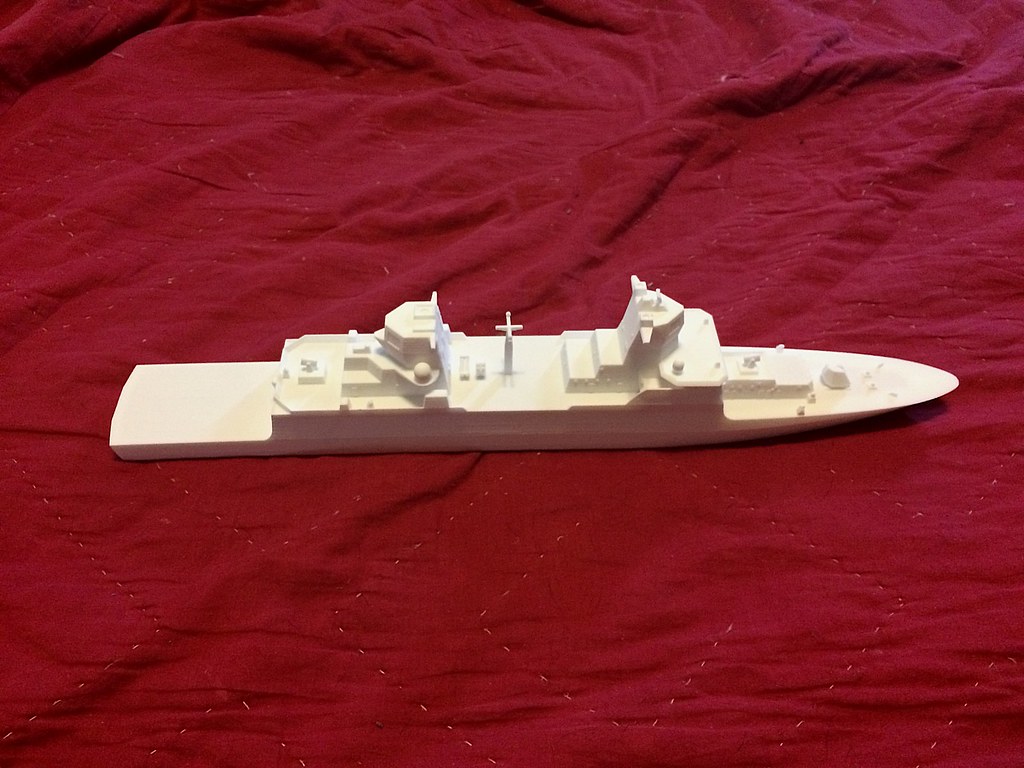

My Review and Build of Dutch 3d Naval Minatures,
1/350 SCALE Type 125 Frigate, Baden-Württemberg, F222 REVIEW & BUILD,



German Type F125 Baden-Württemberg Class Friagtes
The Type 125 Baden-Württemberg class of frigates, currently in development for the German Navy is a joint-venture of Thyssen-Krupp and Lürssen deevelopment. Although the F125-class are officially classified as frigates, in size they are comparable to destroyers. These vessels have a full load displacesment of more than 7,200 tons, making them the largest frigates in the world. They are being built to replace the Type 122 Bremen class frigates of which eight were built.
Three of the Type 125 vessels have already been launched, and so Germany has already retired four of its eight Bremen Class vessels.
As of yet, only one of the new vessels is about to be commissioned, th F222 the Type 125 Baden-Württemberg. Two more have been launched and they are the F223 Nordrhein-Westfalen which was launched 16 April 2015, and F224 Sachsen-Anhalt which was launched 4 March 2016.
Compared to the Bremen class, which were built with Cold War-era conditions and potential conflicts in mind, the Type 125 are being built to be multi-role, but principally directed at surface warfare, with surface and land attack capabilities its strong suite.
Anti-submarine defense will be handled by two helicopters it can carry, and anti-air defense is mainly for short range, close-in defenses using two RAM launchers with 21 missiles each.
F125 will have much enhanced land-attack capabilities. This will better suit the frigates in possible future peacekeeping and peacemaking missions. For such reasons, the F125 will also mount non-lethal weapons.
Major design goals also incluyded reduced radar, infrared and acoustic signatures (stealth technology). The slanted superstructure and use of stealth material and characteristics are evident on the vessels.
Other important requirements include long maintenance periods, such as the capability to deploy F125 class frigates for up to two years away from home with an average sea operation time of more than 5,000 hours per year (that's nearly 60%) which includes operation under tropical conditions.
As a result of this ter requirement, a combined diesel-electric and gas propulsion has been chosen for the machinery. This allows the substitution of large and powerful diesel engines for propulsion and sets of smaller diesel generators for electric power generation with a pool of med-sized diesel generators, reducing the number of different engines.
To enhance survivability of the frigates, important systems are laid out in a two island principle, whih is evident with the two larger superstructures on the ship just in front o amidships, and another behind it. The aerials of the Cassidian TRS-4D Active electronically scanned array radar will be distributed over the two pyramids. This will ensure that the ship remains operational in case of severe damage. It will also allow F125 frigates to keep station if something breaks down and no replacement is available.
An initial batch of four frigates was ordered by the German Navy on 26 June 2007. The initial batch of four ships costs around 2.2 billion Euros. In April 2007, a contract with Finmeccanica was signed for delivery of Otobreda 127 mm Vulcano main guns as well as remote-controlled light gun turrets for the F125. However, the 155mm MONARC gun, as well as the naval GMLRS rocket launcher, were later dropped due to problems with the navalization of these systems.
As a result, the ships are equipeped with a special 127mm naval rifle with long range munition capabilities, and are equipped with ten smaller guns for defence against air and surface targets. The vessels are also armed with non-lethal weapons, such as water cannons and searchlights for non-provocative deterrence and defence.
The charateristics of these frigates are as follows:
Displacement: 7,200 tonnes
Length: 149.52 m (490 ft 7 in)
Beam: 18.80 m (61 ft 8 in)
Draft: 5 m (16 ft 5 in)
Propulsion:
CODLAG
- 1 × 20 MW gas turbine
- 2 × 4.7 MW electric motors
- 4 × 2.9 MW diesel generators
- 3 × gearboxes: one for each shaft and one crossconnect
- 2 × shafts, driving controllable pitch propellers
- 1 × 1 MW bow thruster
Speed: 20 knots (37 km/h) on diesel only, 26 kn (48 km/h) max.
Range: 4,000 nautical miles (7,400 km)
Boats & landing craft carried:
Submarine ROVs
- 4 × 11 m (36 ft 1 in) RHIB, capable of more than 40 kn (74 km/h)
Complement: 190 (standard crew: 110)
Sensors and processing systems:
- 1 × Cassidian TRS-4D AESA radar
- 2 × navigation radars
- IFF diver and swimmer detection sonar (no anti-submarine sonar)
Laser warning:
- KORA-18 Combined RADAR and COMMS ESM from GEDIS
- Link 11, Link 16, Link 22 communications systems
Electronic warfare & decoys:
- TKWA/MASS (Multi Ammunition Softkill System)
- ECM
Armament:
Naval guns:
- 1 × 127 mm Otobreda naval gun carrying:
- Guided VULCANO munition (range: 100 km (62 mi))
- 2 × 27 mm MLG 27 remote-controlled autocannons
- 5 × 12.7 mm Hitrole-NT remote-controlled machine gun turrets
- 2 × 12.7 mm heavy machine guns (manually controlled)
CIWS:
2 × RAM Block II, 21 cells each
Anti-ship missiles:
8 × RGM-84 Harpoon anti-ship missiles (joint sea/land attack missile)
8 x RBS 15 MK4 when they becomes available
Non-Lethal:
Water cannons
Aircraft carried: 2 × Lynx
The Baden-Württemberg, F222
The lead ship in class, the Baden-Württemberg, was laid downin NOvember 2011, launched on 12 December 2013, delivered to the GErman Navy in November 2016, and is slated for commissioning in 2017.
This was a major undertaking for Germany and is the largest surface combatant warship Germany has built since World War II.
However, there has been some controversy.
The ship is large, and has a lot of space. Many missions are expected to be conducted using the space modularly, but there is no provision for longer range surfact to air, or longer range land attack missiles from typical VLS systems that such a large combatant should carry.
With 42 RAM cells, the ship will be capable of defending itself only in th elast seconds of attack by missiles, and the 127mm gun using the Volcanoe minutions provides decent land attack capabilities, but not the type of heavier 155mm batter type ground support originally envisioned.
With eight anti-surface missiles, the ships are armed no better in that regard than the much smaller vessels they are replacing. For anti-submarine warfare they carry the same two type helicopters the Bremen class carry, but they do not have their own anti-submarine sonar that the Bremen class do have.
So, there has been questions raised as to why such a large vessel is needed to replace the smaller BRemen class.
It is true that the 127mm gun with the Volcamo munitions is far superior to the 76mm gun on the BRemen, but it has come at significant cost.
Just the same, the vessels are also much more stealthy, are built to be more survivable, and will be capable of much greater staying power and range than the Brmen class.
It is possible that the Gemrmans will not order any more than the four vessels already ordered to replace the eight Bremen class because another design, the Type 128 is already being designed which will use much the same hull as the Ty[pe 125, but wull include either 32 or 48 VLS cells that are capable of carrying much longer ranged ESSM and standard missiles for air defnse, and capable of carrying LACM (Land attack cruise missiles) as well.
Time will telkl whether the Germans elect to bring forward these vessels, but the lieligood seems great at this poitn.
In the mean time, the Baden-Württemberg, F222, prepares to commission and is an impressive vessel in its own right.
Introduction and What's in the Box - March 2, 2017
The major model makers have not made any model of the Baden-Württemberg vlass to this date, particularly not in 1/350 scale.
However, a company called Shpaeways, which has oened up the market to 3D design and printing of models and other items, has opened the door to the production of many scales of models.
A company called Dutch 3D NAval Miniatures, offers several vessels that are not otherwise available on the market and delivers them in 3D PRinted material in a waterline only model.
These vessels are similar to resin, but they are made with a 3D prnting process and are not solid.
Theyare not chweap. The 3D Baden-Württemberg costs $1488 dollars and you get a vessel that is completed, including aeverything but the small details.
Dutch 3D Naval Miniatures has several other 1/350 scale vessels that may be of interest to enthusiasts to take and then utilize after-market parts and scratch building to detail out.
In addition to the Baden-Württemberg class, they (and other Shapeway Vendors) have (among others) all fo the following:
HMAS ANZAC frigates with the new 3D anti-air upgrade,
HMAS Armidale, PAtrol vessel,
Royal Navy, River Class OPV,
Russian Navy Dyugon, LST
Russian Navy, Buyan-M Corvette,
Russian Navy, Admiral Gorshkov Frigate,
USN Avenger Class anti-mine warfare vessel,
USN Cyclone Class Patrol Boats,
USCG Legend Class NAtional Defense Cutter,
SIGMA 10514 Frigate Class
Here's how the model looks from the box when it arrives::


Last edited:


